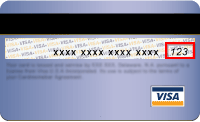Learn about these four other systems currently being used and how they can be integrated with the Enneagram.
MBTI
The Myers-Briggs Type Indicator (MBTI), based on C. Jung’s personality theory and was developed by Kathleen Cook Briggs and Isabel Briggs Myers, is a psychological framework and test that identifies specific preferences in human behavior: how we focus our energy when depleted (extraversion vs. introversion); how we gather information (sensing vs. intuition); how we make decisions from information we receive (thinking vs. feeling); and how we deal with and relate to the outside world (judging vs. perceiving).
Individuals with higher extraversion scores like to engage with others as a way of gaining energy, while those with higher introversion scores need some time alone to recharge themselves. Sensing individuals rely on taste, sight, smell, hearing, and touch to gain information, while individuals who score higher on intuition glean information from their intuition or sense of internal “knowing” that something is true. Individuals with higher scores on thinking make decisions based primarily on analysis and principles, while those who score higher on feeling base decisions more on values and what they like or dislike. Finally, individuals who score as judging come to conclusions quickly, whereas those higher on perceiving like to take their time before they come to closure. The combination of the four dimensions described above produces 16 different MBTI types.
Many organizations use both the Enneagram and MBTI because they are highly complementary and focus on different but compatible aspects of human beings. In addition, there have been numerous correlations between Enneagram styles and MBTI types. For example, Enneagram style Ones tend more toward judging rather than perceiving, Twos tend more toward feeling than thinking, Fours tend more toward intuition than sensing, Fives are more often thinkers than feelers, and so forth.
What makes these correlations particularly interesting is that where correlations do exist, there are always individuals of a particular Enneagram style who are different from the norm. For example, what is the inner experience of a perceiving One, given that Enneagram Ones tend to judge themselves, others, and everything around them? What happens to a thinking Two, someone who tunes into others far more than him- or herself, values relationships and feelings, but then makes decisions more by principle and objective analysis than by feelings and values? Or a feeling Five – Fives automatically and instantaneously detach from their feelings then experience them later. What is it like to cut off from feelings when they are so central to who you are and how you make decisions? These are just a few of the many ways the Enneagram and the MBTI have synergies and raise paradoxical dilemmas.
DISC
The DISC theory, developed by W. M. Marston in the 1920s, is a self-assessment test that classifies four aspects of behavior by testing a person’s preferences. DISC is an acronym for Dominance (control, power, and assertiveness), Influence (in social situations and communication), Steadiness (patience, persistence, and thoughtfulness), and Conscientiousness (structure and organization). D and I represent extroverted aspects of the personality, while C and S indicate introverted aspects. D and C represent task-focused aspects; I and S indicate social or relationship-focused aspects.
While there are many different versions of DISC to choose from, the test results provide a detailed summary of behavior and preferences across these four dimensions. The tests are short – usually 18-25 sets of questions – with some offering single word choices and others using sentences or phrases.
How can these two systems be utilized together? The DISC provides a broad overview of a person’s preferences, while the Enneagram offers an in-depth understanding of a person’s character structure, including their core motivations, assumptive worldview, and repeating patterns of thinking, feeling and behaving. Understood this way, the Enneagram can take DISC results and enable a user to more fully understand what is causing his or her preferences and then follow through with precise development Enneagram-based activities that address the specific areas for growth for his or her Enneagram style.
Insights MDI®
Insights MDI® (Management Development Instruments), a system of diagnostic tools to determine behavior and value preferences in different contexts of the work environment, is based on C.G. Jung’s typing system and W.M. Marston’s DISC model. Insights MDI® is not a comprehensive personality assessment, but instead focuses on four “complexes” that are then used to explain and analyze human behavior: competencies, behavioral preferences, capacity to adapt to different situations, and motives for action. Available in 10 different versions for various target groups, Insights MDI® is used for recruiting staff, personnel development, and team building.
Using a simple, computer-based questionnaire, Insights MDI® describes eight basic types and 60 subtypes. The client marks adjectives in 24 different categories with four choices in each category – from “fits me best” to “fits me least” – and a 25-page computer generated report is then available.
The analysis distinguishes two types: a person’s basic style, a core style that does not change, and an adapted style or mask, which may vary according to current challenges. Insights can also provide a comparison between a person’s profile and the requirements of a particular job.
Insights MDI® and the Enneagram can easily be used together to support individual growth and organizational applications. Because the MDI® takes a broad view of certain factors, the Enneagram can be utilized to add depth, complexity, and precision development actions.
StrengthFinders
StrengthFinders is a personal assessment based on two assumptions: a person’s talents are enduring and unique and a person’s greatest room for growth is in the areas of his or her greatest strength. As a result, this StrengthFinders measures 34 talent themes. For example, the Achiever theme explains why some individuals have such an intense drive; Competition focuses on comparing oneself to others; Context looks to the past for answers; Discipline relates to wanting the world to be predictable; Empathy means sensing the emotions of others.
Based on a two-year Gallup study of what makes excellent managers, StrengthFinders suggests that people’s development should focus on utilizing an individual’s talent rather than focusing on a person’s weaknesses or development areas. A person’s StrengthFinders scores provide the information for this purpose. Breaking the conventional rules of how to manage and develop other, the StrengthFinders’ framework can be used for selection, performance measurement, training, and individual development.
Many of the themes in StrengthFinders are directly related to the Enneagram styles. For example, several Enneagram styles have an intense drive for achievement, but the drive is fueled by different motivational structures. Understanding these different motivational drives is fundamental to igniting them. Similarly, several Enneagram styles are highly emphatic, while several others are not. The Enneagram explains why this is so, as even empathic Enneagram styles are sensitive to the feelings of others in varying degrees and for different reasons.
In sum, the Enneagram can help explain why certain themes appear in a profile, but the Enneagram also gives guidance with developmental activities to either reduce or enhance the particular thematic area, whichever is preferable.


